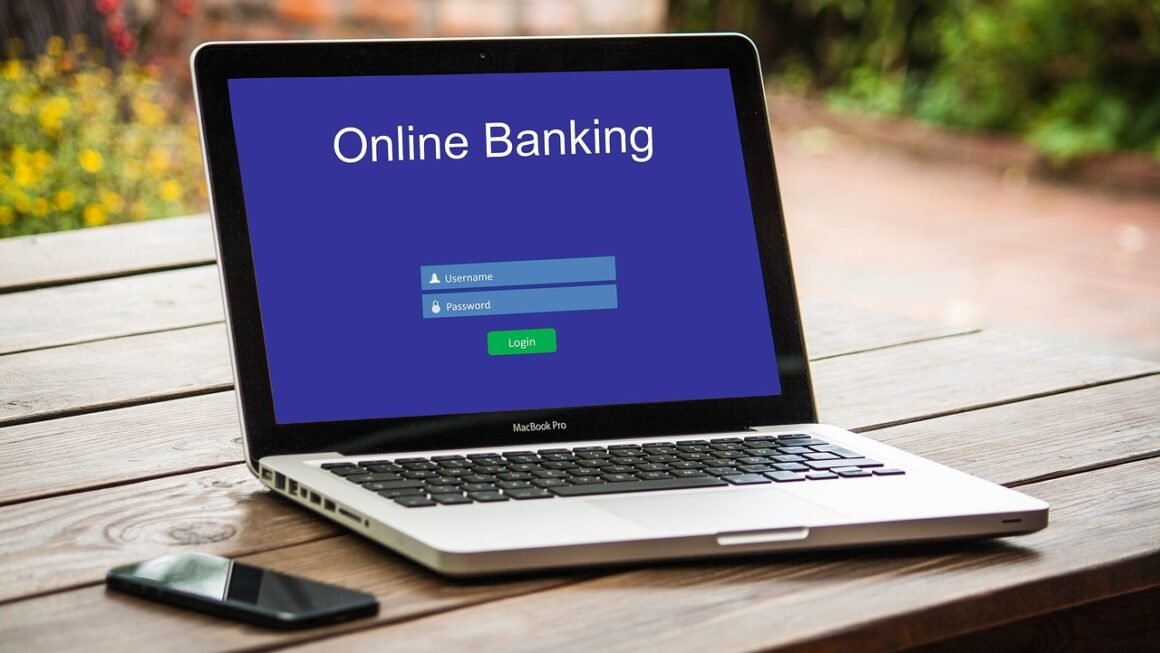Cloud computing has revolutionized the way businesses operate, offering unparalleled scalability, flexibility, and cost-efficiency. However, this paradigm shift also introduces new security challenges that demand a comprehensive and proactive approach. Understanding and mitigating cloud security risks is paramount for organizations of all sizes looking to leverage the power of the cloud while safeguarding their valuable data and maintaining customer trust. This blog post provides a detailed overview of cloud security, covering key concepts, best practices, and practical tips to help you navigate the complexities of securing your cloud environment.
Understanding Cloud Security
Cloud security encompasses the policies, technologies, and controls implemented to protect cloud-based data, applications, and infrastructure from threats. It’s a shared responsibility model, meaning both the cloud provider and the customer have specific security obligations.
The Shared Responsibility Model
The shared responsibility model is a cornerstone of cloud security. It defines the boundaries of security responsibility between the cloud provider (e.g., AWS, Azure, Google Cloud) and the customer.
- Provider Responsibility: The cloud provider is typically responsible for the security of the cloud – the physical infrastructure, network, and foundational services. This includes physical security of data centers, hardware maintenance, and core software patching.
- Customer Responsibility: The customer is responsible for security in the cloud – securing the data, applications, operating systems, and identities they deploy within the cloud environment. This includes configuring security settings, managing access controls, and implementing data encryption.
- Example: AWS is responsible for securing the physical servers and the hypervisor that runs virtual machines. The customer is responsible for securing the operating system, applications, and data that reside within those virtual machines.
Key Cloud Security Concerns
Several key security concerns are associated with cloud computing:
- Data Breaches: Unauthorized access to sensitive data stored in the cloud is a major concern.
– Example: A misconfigured AWS S3 bucket exposes customer data to the public internet.
- Data Loss: Accidental or malicious deletion of data can have severe consequences.
– Example: A disgruntled employee deletes critical database backups stored in the cloud.
- Compliance Violations: Failure to comply with industry regulations (e.g., GDPR, HIPAA) can result in fines and reputational damage.
– Example: Storing protected health information (PHI) in a cloud environment without proper security controls.
- Account Hijacking: Attackers gaining control of cloud accounts can compromise data and infrastructure.
– Example: Using weak passwords or failing to enable multi-factor authentication.
- Insider Threats: Malicious or negligent actions by internal employees or contractors.
– Example: An employee with excessive permissions exfiltrates sensitive data.
- Denial-of-Service (DoS) Attacks: Overwhelming cloud resources with malicious traffic, disrupting services.
– Example: A large-scale DDoS attack targeting a cloud-based web application.
Securing Your Cloud Infrastructure
Protecting your cloud infrastructure requires a multi-layered approach that incorporates various security controls and best practices.
Identity and Access Management (IAM)
IAM is crucial for controlling who has access to your cloud resources.
- Principle of Least Privilege: Grant users only the minimum level of access required to perform their job functions.
– Example: A developer only needs access to specific development resources, not production databases.
- Multi-Factor Authentication (MFA): Require users to provide multiple forms of authentication (e.g., password and a code from a mobile app).
– Example: Enforce MFA for all administrative accounts.
- Role-Based Access Control (RBAC): Assign permissions based on roles, rather than individual users, to simplify management.
– Example: Create a “database administrator” role with permissions to manage databases.
- Regular Access Reviews: Periodically review user access privileges and revoke unnecessary permissions.
– Example: Conduct quarterly reviews of user access to sensitive resources.
Network Security
Network security controls help protect your cloud environment from unauthorized access and malicious traffic.
- Virtual Private Clouds (VPCs): Use VPCs to isolate your cloud resources in a private network.
– Example: Deploy your web application in a VPC with private subnets and a public-facing load balancer.
- Security Groups: Configure security groups to control inbound and outbound traffic to your cloud instances.
– Example: Allow only HTTP and HTTPS traffic to your web servers.
- Network Access Control Lists (NACLs): Use NACLs to control traffic at the subnet level.
– Example: Block traffic from specific IP addresses or CIDR blocks.
- Web Application Firewalls (WAFs): Protect your web applications from common web exploits (e.g., SQL injection, cross-site scripting).
– Example: Use a WAF to filter out malicious traffic targeting your web application.
Data Protection
Protecting your data at rest and in transit is essential for maintaining confidentiality and integrity.
- Encryption: Encrypt sensitive data both at rest and in transit.
– Example: Use server-side encryption to encrypt data stored in S3 buckets.
– Example: Use HTTPS to encrypt data transmitted between your web application and users.
- Data Masking and Tokenization: Mask or tokenize sensitive data to protect it from unauthorized access.
– Example: Mask credit card numbers in your database.
- Data Loss Prevention (DLP): Implement DLP solutions to prevent sensitive data from leaving your cloud environment.
– Example: Use DLP to prevent employees from sending confidential documents via email.
- Regular Backups: Regularly back up your data to protect against data loss.
– Example: Automate daily backups of your databases.
Compliance and Governance
Ensuring compliance with relevant regulations and establishing robust governance policies are critical for maintaining a secure cloud environment.
Regulatory Compliance
Understand and comply with relevant industry regulations (e.g., GDPR, HIPAA, PCI DSS).
- Data Residency: Ensure that your data is stored in compliance with data residency requirements.
– Example: Store EU citizen data in EU-based data centers to comply with GDPR.
- Audit Trails: Maintain detailed audit trails of all activity in your cloud environment.
– Example: Enable CloudTrail in AWS to track API calls and other events.
- Security Certifications: Obtain relevant security certifications (e.g., ISO 27001, SOC 2) to demonstrate your commitment to security.
Governance Policies
Establish clear governance policies and procedures to ensure consistent security practices across your organization.
- Security Policies: Develop comprehensive security policies that cover all aspects of cloud security.
– Example: Define a password policy that requires strong passwords and regular password changes.
- Change Management: Implement a change management process to control changes to your cloud environment.
– Example: Require all changes to be reviewed and approved by a change management board.
- Incident Response: Develop an incident response plan to handle security incidents effectively.
– Example: Define procedures for reporting, investigating, and resolving security incidents.
- Regular Security Audits: Conduct regular security audits to identify and address vulnerabilities.
– Example: Perform annual penetration tests to assess the security of your cloud environment.
Monitoring and Threat Detection
Proactive monitoring and threat detection are essential for identifying and responding to security incidents in a timely manner.
Security Information and Event Management (SIEM)
Use a SIEM system to collect, analyze, and correlate security logs from various sources.
- Log Aggregation: Collect logs from all your cloud resources (e.g., servers, applications, databases).
– Example: Use AWS CloudWatch Logs to collect logs from your EC2 instances.
- Real-Time Monitoring: Monitor your cloud environment in real-time for suspicious activity.
– Example: Set up alerts to notify you when there are unusual login attempts or network traffic patterns.
- Threat Intelligence: Integrate threat intelligence feeds into your SIEM system to identify known threats.
– Example: Use a threat intelligence feed to identify malicious IP addresses and domains.
Intrusion Detection and Prevention Systems (IDPS)
Deploy IDPS to detect and prevent malicious activity in your cloud environment.
- Network Intrusion Detection: Monitor network traffic for malicious patterns and anomalies.
– Example: Use a network intrusion detection system to detect port scanning and denial-of-service attacks.
- Host Intrusion Detection: Monitor individual servers for malicious activity.
– Example: Use a host intrusion detection system to detect malware and unauthorized file modifications.
- Automated Response: Automate responses to security incidents to minimize damage.
– Example:* Automatically isolate compromised servers from the network.
Conclusion
Securing your cloud environment is an ongoing process that requires a holistic approach. By understanding the shared responsibility model, implementing strong security controls, ensuring compliance, and actively monitoring for threats, you can minimize your risk exposure and protect your valuable data in the cloud. Embrace these best practices to build a resilient and secure cloud infrastructure that enables your business to thrive in the digital age. Stay informed about emerging threats and adapt your security posture accordingly to maintain a robust defense against evolving cyber risks.



